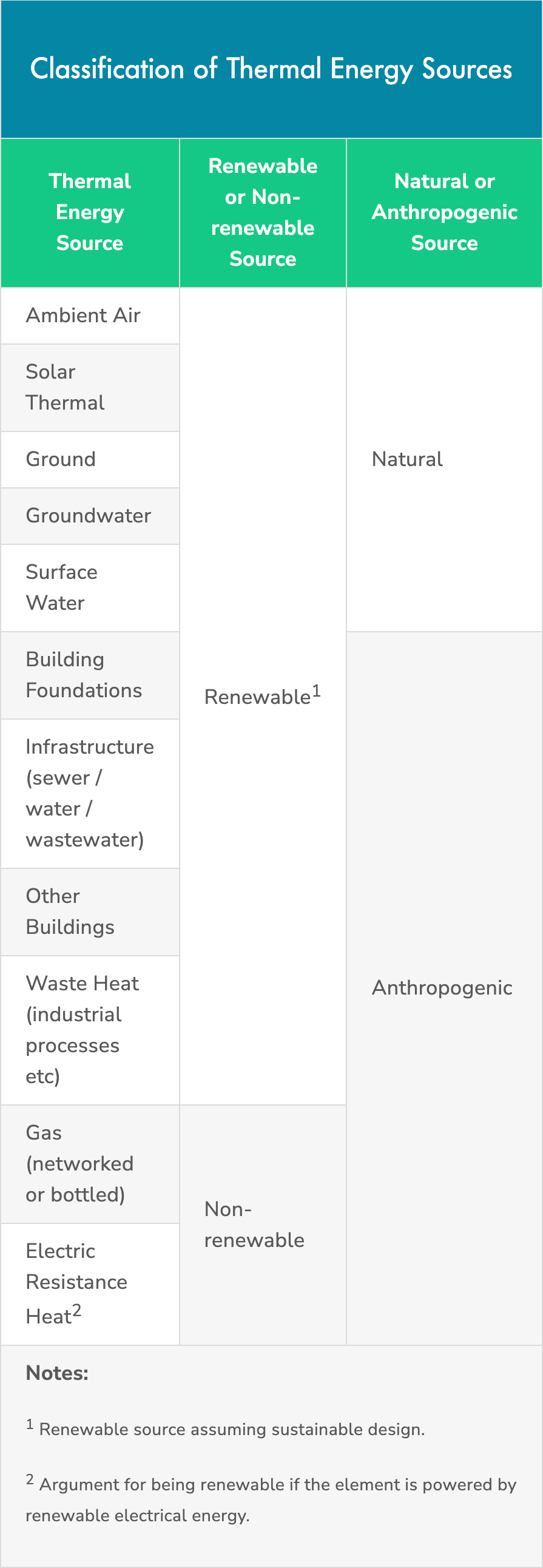THE TECH
Introducing Renewable Thermal Energy
Thermal is energy too and it can be renewable. An integral part of the low carbon future, renewable thermal energy is the demand side equivalent of renewable electrical energy.
While renewable electrical energy supplies low or zero carbon electrical energy to the building, renewable thermal energy enables the heating and cooling of that building or process to be as efficient and low carbon as possible.
Geoexchange or geothermal heating and cooling systems are part of the concept of renewable thermal energy but not the only part. In accordance with the below table, there are many sources of thermal energy which can be classified as renewable or non-renewable and/ or natural or anthropogenic.
Classification of Thermal Energy Sources |
||
| Thermal Energy Source | Renewable or Non-renewable Source | Natural or Anthropogenic Source |
| Ambient Air | Renewable1 | Natural |
| Solar Thermal | ||
| Ground | ||
| Groundwater | ||
| Surface Water | ||
| Building Foundations | Anthropogenic | |
| Infrastructure (sewer / water / wastewater) | ||
| Other Buildings | ||
| Waste Heat (industrial processes etc) | ||
| Gas (networked or bottled) | Non-renewable | |
| Electric Resistance Heat2 | ||
| Notes:
1 Renewable source assuming sustainable design. 2 Argument for being renewable if the element is powered by renewable electrical energy. |
||

The temperature, availability and timing of any given thermal energy source varies at each location. Their suitability to a given building will be determined by the method used to access that energy and the cost of doing so.
Importantly, Note 1 in the above table is critical with respect to the renewable definition. A poor design or application can quickly result in a seemingly renewable source becoming a non-renewable system.
Renewable thermal energy systems are multidisciplinary by nature. Successful implementation of a system requires the coordination of architects, engineers (mechanical, electrical, environmental), hydrogeologists, geologists, drilling and earthworks contractors, plumbers, electricians and refrigeration technicians as well as the builder, client, project managers and others.
